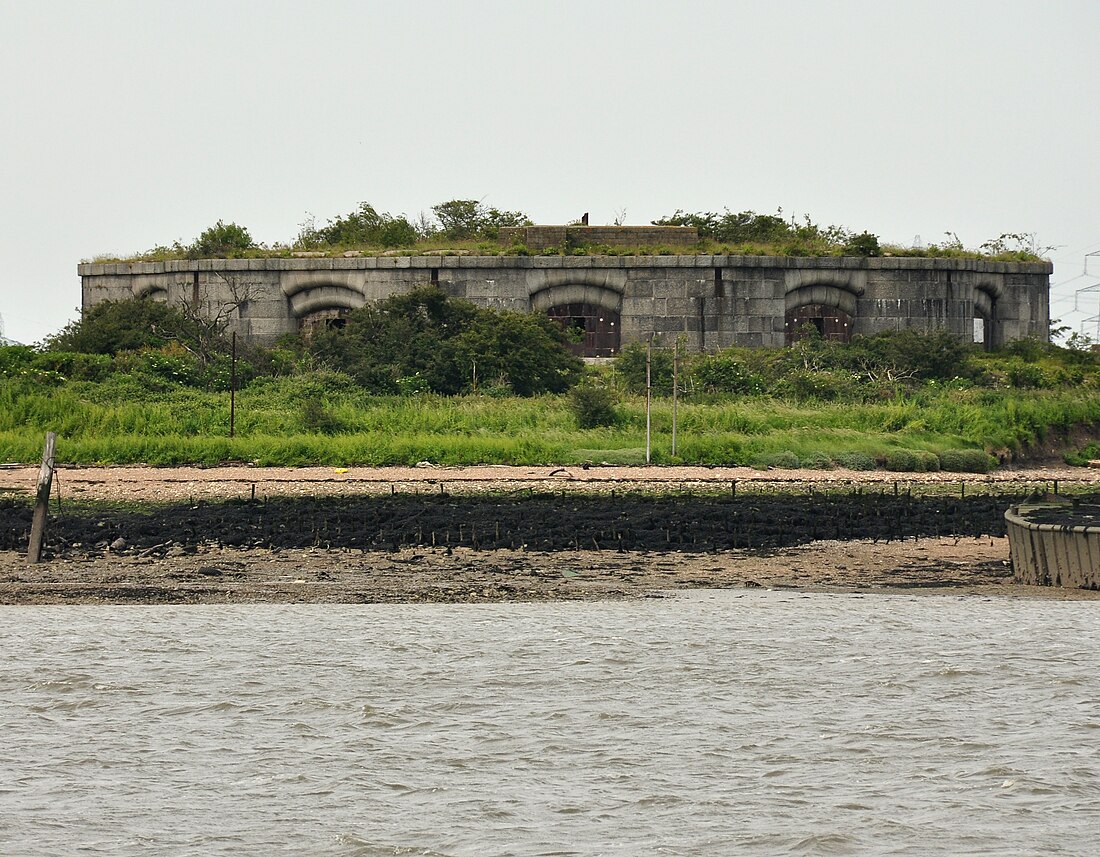Hoo Fort
Disused military installation in Kent, England From Wikipedia, the free encyclopedia
Hoo Fort is a nineteenth-century military installation on the River Medway in Kent, England, that formed part of the defences of Chatham Naval Dockyard. Hoo Fort, like Fort Darnet 1 km (0.6 mi) downstream, was built on the recommendations of the 1859 Royal Commission. It is located on Hoo Island covering Pinup Reach, the inner navigable channel of the River Medway. Hoo Island sits to the south of the Hoo Peninsula and is within the parish of Hoo, Kent. The fort can be viewed from along the Saxon Shore Way, accessible from Vicarage Lane in Hoo.
| Hoo Fort | |
|---|---|
| Rochester, Kent, England | |
 Hoo Fort in the River Medway | |
| Coordinates | 51°24′12″N 00°34′53″E |
| Site information | |
| Owner | Medway Ports |
| Condition | Intact |
| Site history | |
| Built | 19th century |
| Built by | Captain Siborne, R.E.,[1] |
| Materials | Concrete skirts and brickwork |
| Events | Never used |
| Official name | Hoo Fort |
| Designated | 1 November 1963 |
| Reference no. | 1019643 |
History

Originally designed for two tiers of guns mounted in a circle, with a boom strung between Hoo Fort and Fort Darnet, there were many problems with subsidence, and after extensive cost overruns the forts were completed in 1871 with a single tier of eleven 9-inch rifled muzzle-loading guns, and no boom.[2] Each gun was mounted in an individual casemate with heavily armoured firing port.[1]
The forts were decommissioned before the First World War. In the Second World War, the fort was used as an observation post, with platforms and pillboxes built on top. The fort is still in fair condition. It is a Scheduled Monument[3] and is owned by Medway Ports.[1]
References
External links
Wikiwand in your browser!
Seamless Wikipedia browsing. On steroids.
Every time you click a link to Wikipedia, Wiktionary or Wikiquote in your browser's search results, it will show the modern Wikiwand interface.
Wikiwand extension is a five stars, simple, with minimum permission required to keep your browsing private, safe and transparent.

